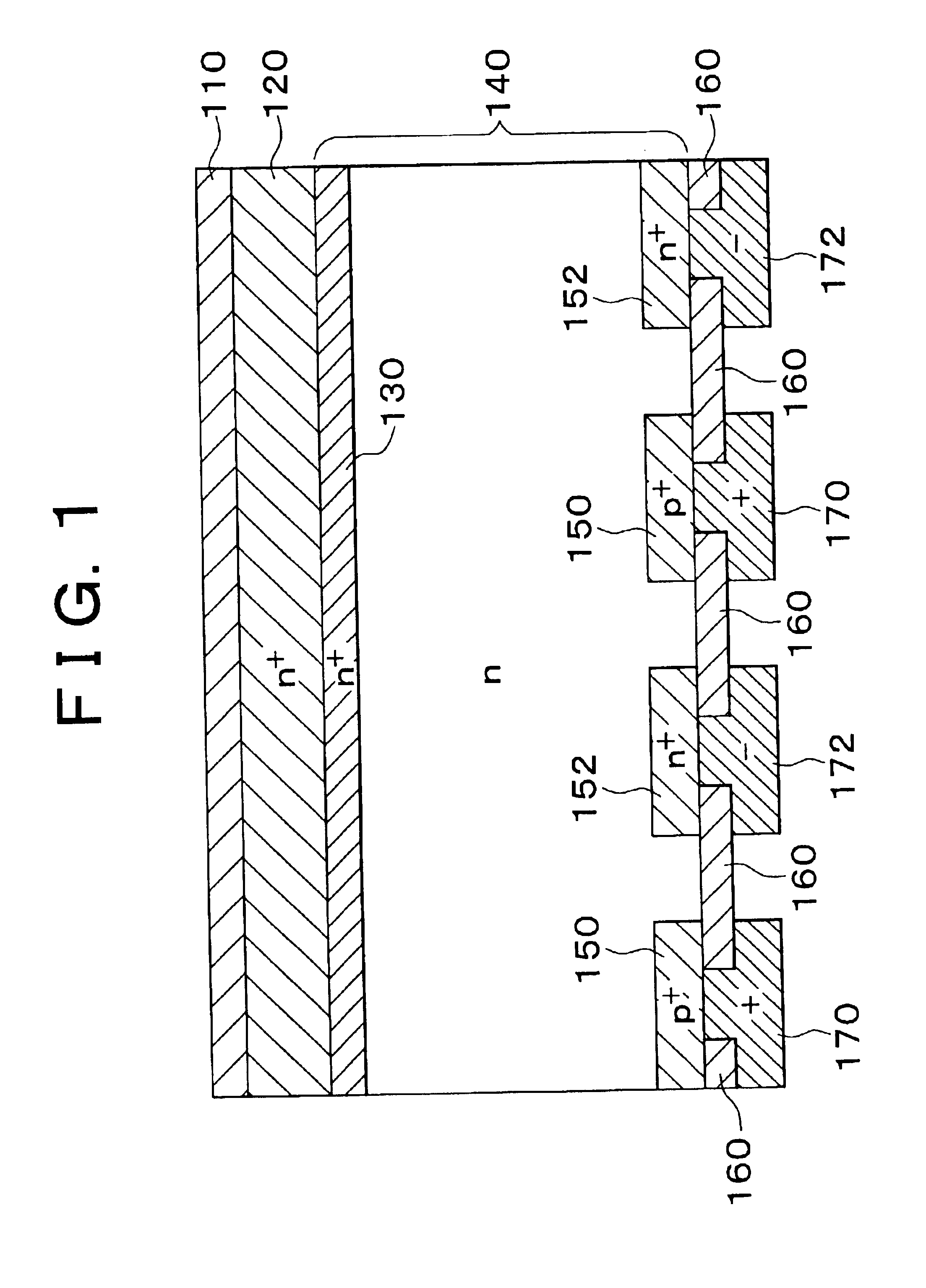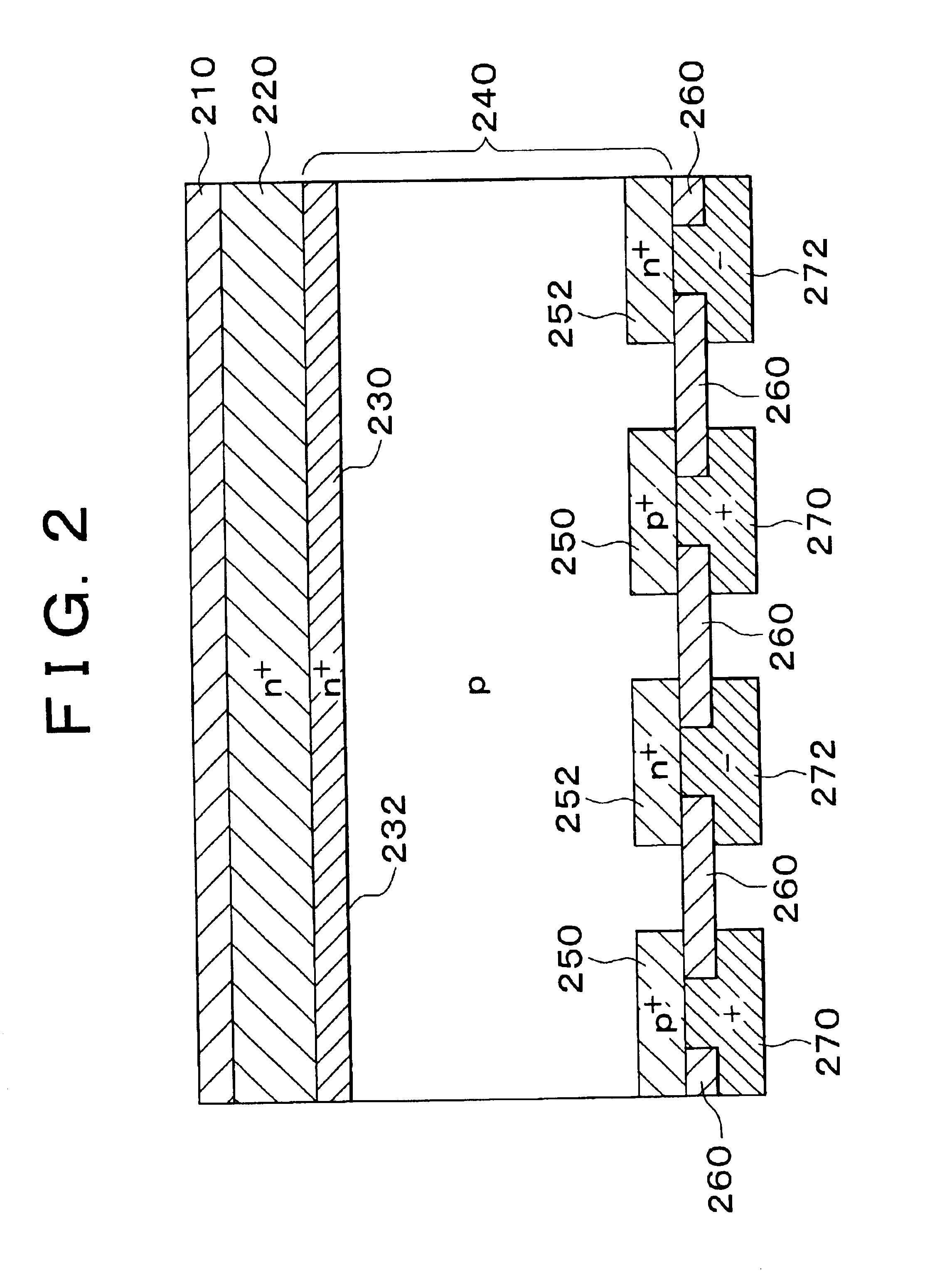Photoelectric conversion element and method of manufacturing the same
a technology of photoelectric conversion element and manufacturing method, which is applied in the direction of transistors, solid-state devices, power plants, etc., can solve the problems of unavailing increase light intensity, decrease in light impinging on the photoelectric conversion element, and not quite suited to a photoelectric conversion element, so as to prevent the increase in the number of defects on the surface of the substra
- Summary
- Abstract
- Description
- Claims
- Application Information
AI Technical Summary
Benefits of technology
Problems solved by technology
Method used
Image
Examples
first embodiment
[0034][First Embodiment]
[0035]FIG. 1 is a cross-sectional view of a photoelectric conversion element in accordance with a first embodiment of the invention. First of all, a light-receiving surface side of the basic construction of the photoelectric conversion element shown in FIG. 1 will be described. A reflection-preventing film 110 is a multi-layer optical thin film provided to reduce a light reflection loss. The reflection-preventing film 110 functions as a protective film for protecting a surface of a wide-gap semiconductor thin film 120, which will be described later. The reflection-preventing film 110 reduces the number of defects on an interface between the reflection-preventing film 110 and the semiconductor thin film 120.
[0036]The wide-gap semiconductor thin film 120 is constructed of a semiconductor that is larger in band gap than a semiconductor substrate 140. The wide-gap semiconductor thin film 120 has an element causing a conductivity identical to a conductivity of the...
second embodiment
[0051][Second Embodiment]
[0052]FIG. 2 is a cross-sectional view of the photoelectric conversion element in accordance with a second embodiment of the invention. First of all, a light-receiving surface side of the basic construction of the photoelectric conversion element shown in FIG. 2 will be described. A reflection-preventing film 210 is substantially the same as the reflection-preventing film 110 of the photoelectric conversion element shown in FIG. 1.
[0053]A wide-gap semiconductor thin film 220 is constructed of a semiconductor that is larger in band gap than a semiconductor substrate 240, and contains an element causing a conductivity that is different from a conductivity of the semiconductor substrate 240.
[0054]In FIG. 2, an upper n+ layer (hereinafter referred to as “a light-receiving surface side n+ layer”) 230 forms a pn junction 232 together with the semiconductor substrate 240, thus controlling a moving direction of carries and reducing a recombination loss on an interfa...
third embodiment
[0069][Third Embodiment]
[0070]FIG. 3 is a cross-sectional view of a photoelectric conversion element in accordance with a third embodiment of the invention. First of all, a light-receiving surface side of the basic construction of the photoelectric conversion element shown in FIG. 3 will be described. An insulative thin film 320 is a thin film that allows penetration of 95% or more of light beams having a wavelength of 800 to 2000 nm and that contains an element causing a conductivity identical to a conductivity of a semiconductor substrate 340. The insulative thin film 320 also functions as a reflection-preventing film.
[0071]In FIG. 3, an upper n+ layer (hereinafter referred to as “a light-receiving surface side n+ layer”) 330 controls a moving direction of carriers and reduces a recombination loss on an interface having a large number of defects. The light-receiving surface side n+ layer 330 is formed by the diffusion of an element that is contained in the insulative thin film 320...
PUM
 Login to View More
Login to View More Abstract
Description
Claims
Application Information
 Login to View More
Login to View More - R&D
- Intellectual Property
- Life Sciences
- Materials
- Tech Scout
- Unparalleled Data Quality
- Higher Quality Content
- 60% Fewer Hallucinations
Browse by: Latest US Patents, China's latest patents, Technical Efficacy Thesaurus, Application Domain, Technology Topic, Popular Technical Reports.
© 2025 PatSnap. All rights reserved.Legal|Privacy policy|Modern Slavery Act Transparency Statement|Sitemap|About US| Contact US: help@patsnap.com



